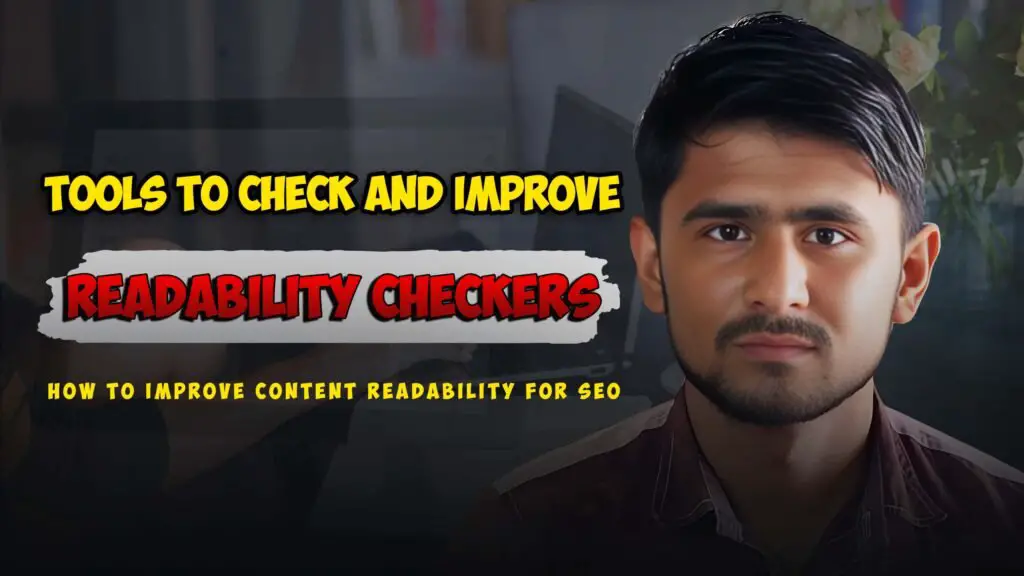The Importance of Readability in SEO
Readability of content is an important element of a successful SEO strategy that many site owners do not consider. If websites are easy to read users stay longer as they are engaged they are also more likely to make a purchase. This comprehensive guide will help you implement ways to increase the readability of your content. This will significantly impact the performance of your SEO and the user experience. From basic formatting strategies to advanced tools for readingability You’ll learn practical tips to help your content become more user-friendly and SEO-friendly.
Understanding Content Readability and Its Impact on SEO
Readability refers to how simple it is for readers to comprehend and read the written content you have created. Good readability ensures that visitors quickly understand your message without becoming exhausted or confused. When your content is readable and understandable, visitors spend longer on your site, which reduces bounce rates and boosting the engagement the metrics that search engines monitor.
While readability does not directly affect the SEO ranking, it does affect various aspects that search engines such as Google consider to be important. This includes click-through rate (CTR) bounce rate, page time and return visitors. If readers find your content difficult to read, they quit quickly, signaling Google that the content might not be useful.
Search engines are focused on the user experience, and reading is a crucial aspect of the experience. If users leave the page without having read the contents and then search engines see this as a poor user experience and can decrease the page’s rank as a result. This means that improving readability is not just beneficial to users, but also essential to SEO successful.
It is reported that the Nielsen Norman Group reports that the average user reads only 28percent of content on an average website in a single visit. This highlights how crucial it is to make your content accessible and readable. If your content is easier to read this 28% is more valuable and meaningful for your readers.
How Readability Affects User Engagement

Readability directly influences how readers engage with the content. When your content is well-structured, and understandable readers are able to follow the text easily, which results in an enjoyable user experience. This can lead to:
- More time spent on the page
- Lower bounce rates
- Engagement with your content is increased
- More likely to share
- Higher chance of conversion
However unorganized or unclear content may frustrate users which can result in a negative user experience. A high bounce rate and a low percentage of time spent looking at page metrics indicates Google that this content isn’t worth reading to the users, which could affect the rankings of the website.
Key Factors That Influence Content Readability
A variety of factors affect how read-able your content. Knowing these aspects can help you write content that both the search engines and users will enjoy.
Sentence and Paragraph Length
Complex sentences with long lengths are difficult to comprehend and read. Studies show that if the typical length of a sentence exceeds 14 words users are able to comprehend over 90% of information. At 43 words or less, the comprehension falls to a mere 10%. By breaking sentences into smaller ones greatly improves the readability.
In the same way, huge chunks of text can be intimidating to readers and render content difficult to absorb. The shorter paragraphs (2-3 sentences) provide an extra white area on the pages, which makes the content appear less intimidating as well as easier to read.
Word Choice and Language Complexity
The words you select greatly influence the quality of your content. Making use of simpler alternatives to more complex words can make your content easily accessible to a larger audience. In this case, you can replace:
- “At the present time” is a synonym for “Now”
- “For the reason that” is followed by “Because”
Utilizing everyday language rather than technical or technical terms can improve comprehension, particularly for those not experts on their area of expertise.
Content Structure and Formatting
The way you arrange and format your content has a significant impact on the readability of your content. Content that has clear headers, subheaders, as well as an organized structure can help readers to understand and comprehend information better. Headers help to establish the structure and help to understand information. they can also assist in the use of assistive technology when reading with a voice.
Visual elements such as bullet points, numbered lists tables and pictures are used to break up text, making the content more interesting and easy to read. These elements add visual appeal and aid readers in interpreting information in a variety of ways.
Practical Strategies to Improve Content Readability
Implementing these techniques can greatly improve the readability of your content and, as a result, the SEO quality of your content.
Use Headers and Subheaders Effectively
Headers and subheaders serve as signs that direct users through the content. They help structure your content and break up long pieces of text. Headers are created when:
- Create them to be unique and memorable.
- Your page should be structured logically
- Check that headers accurately describe the contents
- Be sure to make them actionable as soon as you can.
Headers also aid search engines to understand the structure of your content as well as its primary themes, which will help increase your SEO ranking.
Keep Sentences and Paragraphs Concise
One of the most effective methods to increase readability is to keep sentences at a minimum of 20 words. Longer sentences are more difficult to read and comprehend. Divide longer sentences into three or two shorter ones or use bullet points for better comprehension.
Also, make sure that your paragraphs are short and focused on one concept. This allows for more white space, making it less daunting for readers. Try to write paragraphs of 3-4 sentences for content on the web.
Use Plain, Simple Language
Write as if you’re talking with a nine-year old. This doesn’t mean reducing your message, however it’s about making your content more accessible to a larger audience.Use simple, familiar words instead of formal, lengthy ones. For instance:
- Make use of “help” instead of “facilitate”
- Make use of “start” instead of “initiate”
- Make use of “show” instead of “demonstrate”
This method allows your content to be easier to read by scanning it and the majority of users will get it, regardless of degree of education or level of expertise.
Write in Active Voice
Active voice helps your writing become clearer, more precise and more comprehensible. For instance:
- Active: “The report was written by the team.”
- Inactive: “The team wrote the report.”
Active voice helps create an enhanced connection with readers. It also makes use of less words, which increases the readability and involvement.
Incorporate Visual Elements
Visual elements break down text and aid in comprehension. Include:
- Diagrams and images to demonstrate complicated concepts
- Charts and graphs to support data presentation
- Videos to clarify difficult subjects
- Infographics to provide a summary of the information
These elements don’t just enhance the readability of your content, but they also make your content more appealing and memorable.
Use Personal Pronouns Where Possible
Utilizing words such as “you,” “we,” and “I” creates a conversational tone that draws readers. It makes the content feel more authentic and personal. For instance:
- In lieu of “Users should consider optimizing readability.”
- Consider: “You should consider optimizing readability for better results.”
This method helps to build a connection to readers and makes difficult information appear more accessible.
Tools to Check and Improve Content Readability

A variety of tools can assist you to evaluate and improve the readability of your content. These tools offer valuable information and suggestions for improving.
Readability Checkers
Readability checkers examine your content and score it using various formulas for reading. They can help you identify areas of needing improvement and provide suggestions to increase the readability of your content.
Insytful provides a readability checker that can help evaluate the readability of your web content. Other popular readers include:
- Hemingway Editor
- Grammarly
- ReadablePro
- Yoast SEO readability tester
These tools can highlight complicated sentences or passive voice as well as other factors that could make it difficult to read.
SEO Plugins with Readability features
A lot of SEO plugins come with reading analysis capabilities. For instance, Yoast SEO for WordPress examines readability of your content and gives suggestions to improve it. These plugins assist you in optimizing your website your site for SEO as well as for readers.
AI Writing Assistants
AI writing tools such as Wordtune can immediately improve your content’s readability, by offering alternatives to long phrases and even words. These tools can help you simplify your sentences, simplify language and increase the overall readability, without losing meaning.
Semantic SEO and Readability: Finding the Right Balance
Semantic SEO concentrates on the significance of search queries, rather than precise keywords that match. This method is a perfect fit for producing content that is readable because it focuses on natural language and extensive subject coverage.
Understanding Semantic Keywords
Semantic keywords are terms or phrases that are conceptually connected to your issue . As an example, if the principal key word includes “content readability,” semantic keywords could include “readability score,” “text formatting,” and “user experience.”
Utilizing semantic keywords help search engines to understand your site’s topic, scope and depth. This helps you rank higher on search results for relevant searches. Google utilizes semantic search to identify results that align the content of the query to the purpose of your website.
Incorporating LSI Keywords for Better Context
Latent Semantic Indexing (LSI) keywords are words and phrases that are that are semantically connected to your primary keyword. In contrast to traditional keyword use that is focused on precise matching, LSI keywords help search engines comprehend the larger context of your content.
For instance, if the principal search term includes “content readability,” LSI keywords could comprise “text clarity,” “reading ease,” and “user-friendly content.” These keywords provide further context to help search engines effectively match your content to users’ searches.
Finding the Balance Between Keywords and Readability
When you incorporate keywords, make sure to make sure to consider readability first. Keywords should naturally fit into your content, without affecting the flow of your text or creating awkward sentences. Here’s how you can achieve the right balance:
- Keywords should be used only when they are appropriate in context.
- Avoid putting keywords in sentences
- Prioritize semantic relevance rather than density of exact matches
- Use synonyms and variations as necessary.
- Prioritize the user experience over keywords positioning
Be aware that the algorithms of Google are advanced enough to be able to read content that does not have excessive keyword usage. Writing valuable, easy-to-read content that is designed to meet the needs of users will naturally include relevant keywords.
Long-Tail Keywords and Content Readability
Long-tail keywords are the longest and more precise keyword phrases that help you reach particular niche markets with high conversion rates.
Benefits of Long-Tail Keywords for Readability
Long-tail keywords are often a natural way to enhance readability due to:
- More natural and conversational in text
- Find out how real people search and talk
- Provide clearer context for your content
- Focus your attention on a specific area instead of broad topics
For example, instead optimizing your content for “readability,” you might concentrate on “how to improve content readability for SEO.” This is a longer phrase that is easier to integrate naturally into sentences and allows you to you focus your content around the specific aspects of readability.
Incorporating Long-Tail Keywords Naturally
When you use long-tail keywords, integrate the keywords into content a way that keeps the an unnatural flow and ease of reading:
- Use them in headers as well as subheaders when appropriate.
- Include them in the introduction paragraphs to establish relevance of the topic.
- Break them up into multiple sentences, if needed.
- Utilize variations that sound natural in the context.
This strategy assists you in optimizing for specific search terms while still maintaining high quality readability standards.
Case Study: Improving Readability for Better SEO Results
Let’s take a look at a concrete example of how improving readability can improve SEO performance.
The Challenge
A blog on content marketing had a difficult time overcoming high bounce rates, despite publishing detailed, informative posts. The average page time was less than one minute and the conversion rates were low. After reviewing the content, they realized the most significant issues:
- Long, complex sentences that run 30+ words
- Paragraphs containing 7 to 8 sentences
- A minimal use of headers and subheaders.
- Technical jargon with no explanations
- Insufficient visual elements
The Solution
The blog has implemented these improvements in readability:
- The average sentence length was reduced to 15 words
- Short paragraphs of 2-3 sentences
- Add descriptive headers to each 300 words
- Replaced technical terms with more simple alternatives
- Images, charts and bullet points
- New formatting features include white space and easy options for fonts
The Results
After just three month, our blog has seen important improvement:
- 35% reduction in bounce rate by 35%
- An increase of 126% in the average page time
- 42% increase in pages per session
- 28% growth in organic traffic
- Higher conversion rate of 18%
This case shows how simple changes to readability can greatly influence SEO performance as well as user engagement measurements.
Common Readability Mistakes to Avoid
When you are optimizing content to be readable Be sure to be aware of these common mistakes which can derail your efforts.
Overusing Complex Terminology
Although industry terms have their place, using too much terminology that isn’t understood by the general public renders content more difficult to understand. Make sure to explain technical terms whenever they’re first introduced. look at what alternatives may be better.
Inconsistent Formatting
Uncoordinated formatting can confuse readers and makes content difficult to understand. Keep consistency in:
- Header hierarchy
- Sizes and styles of fonts
- Formats for bullet points
- Length of paragraphs
- Layout overall
Consistency lets readers be aware of what to expect, and enhances their reading experience.
Neglecting Mobile Readability
A lot of websites optimize their reading experience for desktop users, but ignore mobile users. Since the majority of web traffic comes via mobile devices This is a major mistake. For mobile readability:
- Use even shorter paragraphs (1-2 sentences)
- Ensure adequate font size (minimum 16px)
- Provide sufficient spacing between lines
- Avoid tables that are wide and require horizontal scrolling
- Utilize touch-friendly components
Readability that is mobile-friendly is crucial for an enjoyable user experience as well as SEO performance.
Focusing Too Much on Readability Scores
While readability scores can be useful guideposts, don’t be obsessed with getting perfect scores without considering the voice, style, or the quality of your content. Sometimes, a lower score on readability is fine in the context of preserving your brand’s voice, or describing an intricate subject thoroughly.
Advanced Readability Techniques for SEO
In addition to the basic, these sophisticated methods can help improve the readability of your content and improve its SEO performance.
Leveraging User Behavior Data
Study how readers react to your material in order to pinpoint difficulties with reading:
- The heat maps highlight the places where users stop reading
- Scroll depth is the amount of time users can scroll down the page.
- Click patterns show which elements draw interest
Make use of this data to determine and fix areas that have low engagement.
A/B Testing Readability Elements
Try different reading strategies to determine which one works best for your target audience:
- Compare short and. medium length paragraphs
- Try different styles of headers
- Compare the content of both using bulleted lists and without
- Evaluate different font choices
A/B testing can help you identify the particular readability factors which resonate for your target audience.
Creating Content for Different Reading Levels
Different readers have different preferences for reading. Think about making different versions of information that is tailored to various reading levels:
- Executive summary for busy professionals
- In-depth explanations for those looking for more depth
- Visual versions designed for learners with visual impairments.
- Simple versions aimed at general public
This method ensures that all users are able to access and comprehend your content in the format they prefer. format.
Readability Checklist for SEO Content
Check this checklist to make sure your content is readability-friendly. guidelines:
- The average sentence length is less than 20 words.
- Paragraphs contain 2-3 sentences maximum
- Headers appear every 300-350 words
- Content uses active voice predominantly
- Technical terms are explained or simplified
- Text includes bullet points, numbered lists, or tables
- Visual elements support and enhance text
- Font size and type are easily readable
- Adequate white space surrounds text elements
- Content flows logically with clear transitions
- Mobile view maintains readability
- Readability score is appropriate for the target audience
This checklist will help you ensure that you’ve taken care of the most crucial aspects of readability in your content for SEO.
The Future of Content Readability and SEO
As search engines get more sophisticated in analyzing the intent of users and the quality of content Readability is likely to play a larger aspect in SEO performance.
Voice Search and Conversational Content
The growth of voice search highlights the necessity for accessible, conversational content that reflects how people naturally speak. Content designed for readability is likely to be more effective in results of voice searches because it conforms to natural speech patterns.
AI and Personalized Readability
The advancements in AI could soon allow websites to automatically alter content reading level based on preferences of users and behavior or reading level. This personalized approach can significantly increase the user experience and improve engagement measurements.
Visual Content and Multimedia Integration
As attention spans diminish the integration of visual elements into text will become more crucial to maintain engagement. The right balance between text videos, images and interactive elements is crucial to improve readability.
Conclusion: Making Readability a Priority in Your SEO Strategy
Improved readability of content doesn’t only mean about making text more easy to read, it’s about creating a better experience, which will be recognized by the search engines with better positions. If you implement the strategies laid out in this article to improve your content’s readability, connect with your readers more effectively and increase the performance of your SEO.
Keep in mind that reading improvement doesn’t necessitate a complete overhaul of content. Begin by addressing the most important concerns:
- Break lengthy paragraphs and sentences into smaller pieces
- Include explicit, informative headers as well as subheaders.
- Make use of a simpler language whenever possible.
- Integrate visual elements in support of the text
- Convert content into a format for simple scanning
The relatively minor changes you make will dramatically alter the way people engage with content which can lead to more engagement metrics and, ultimately, higher search rankings.
Make readingability a central component in your strategy for content, rather than a secondary consideration. When you focus on how people browse and consume information on the internet You’ll be able to create content that pleases both humans and algorithmic algorithms of search engines, resulting in long-term SEO success.




